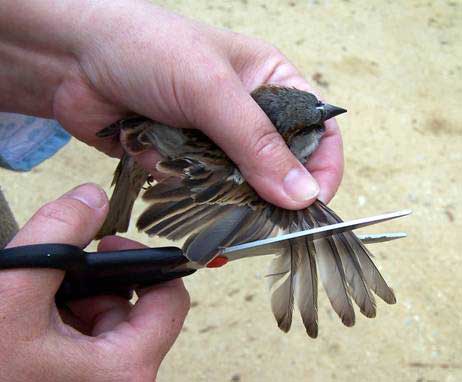Observing a helpless bird with a broken wing can be a heartbreaking experience, but with the right knowledge and care, you can give this injured creature a fighting chance at recovery. Whether you’ve encountered a sparrow, robin, or a majestic eagle, this comprehensive guide will empower you to make informed decisions and provide essential assistance to birds in distress.

Image: www.sialis.org
Identifying a Broken Wing
Identifying a broken wing in a bird can be challenging, as they often attempt to conceal their injuries. However, certain signs can indicate a fracture:
- Unusual posture: The bird may hold its wing at an unnatural angle or droop it significantly.
- Bleeding or bruising: Examine the bird’s wing for any visible wounds or swelling.
- Limited movement: The bird may avoid using its injured wing or show difficulty flapping it.
- Vocalization: Birds experiencing pain may vocalize more frequently than usual.
Immediate First Aid
Once you’ve identified a broken wing, prompt action is crucial to minimize further injury:
- Restrain the bird: Gently secure the bird in a towel or soft cloth to restrain it and prevent further flapping.
- Control bleeding: If there is bleeding, apply gentle pressure to the wound with a clean tissue or bandage.
- Immobilize the wing: Using a soft material like a gauze wrap or handkerchief, create a loose splint to support the injured wing. Avoid wrapping too tightly.
- Provide warmth: Place the bird in a warm, dry environment to prevent hypothermia.
Long-Term Care
For a successful recovery, ongoing care is essential. Consult a wildlife rehabilitator or avian veterinarian for professional guidance.
- Nutritional support: Provide the bird with a nutritious diet that is appropriate for its species. Soft foods like mealworms or moistened birdseed may be suitable.
- Cage rest: Restrict the bird’s movements to prevent further injury. Provide a quiet, enclosed space with adequate space for it to stretch and flap its wings.
- Pain management: In some cases, pain medication may be necessary to manage the bird’s discomfort.
- Exercise: Once the wing starts healing, gradual exercise is crucial to regain range of motion and strength. Provide supervised opportunities for flapping and perching.
Releasing the Bird
The ultimate goal of caring for a bird with a broken wing is to rehabilitate it and release it back into its natural habitat. However, this should only be considered once the bird has fully recovered and is strong enough to fend for itself.
- Flight test: Before releasing, observe the bird’s ability to fly steadily and perch comfortably. It should show no signs of pain or difficulty maneuvering.
- Soft release: Initially, release the bird in a protected environment, such as a sheltered backyard or aviary. Monitor its progress closely.
- Full release: If the bird remains healthy and adapts well to its surroundings, gradually increase the freedom until it is able to survive independently.
Legal Considerations
In many areas, it is illegal to keep wild birds as pets or to attempt rehabilitation without proper authorization. Always check local regulations and consult qualified professionals before handling injured birds.
Conclusion
Helping birds with broken wings is a rewarding but challenging endeavor that requires patience, compassion, and knowledge. By following the guidance outlined in this article, you can play a vital role in ensuring their recovery and creating a positive impact on their well-being. Remember that the welfare of the bird should always be your utmost priority.

Image: birdingdepot.com
What To Do With Bird With Broken Wing


/GettyImages-1303637-two-way-mirror-57126b585f9b588cc2ed8a7b-5b8ef296c9e77c0050809a9a.jpg?w=740&resize=740,414&ssl=1)


